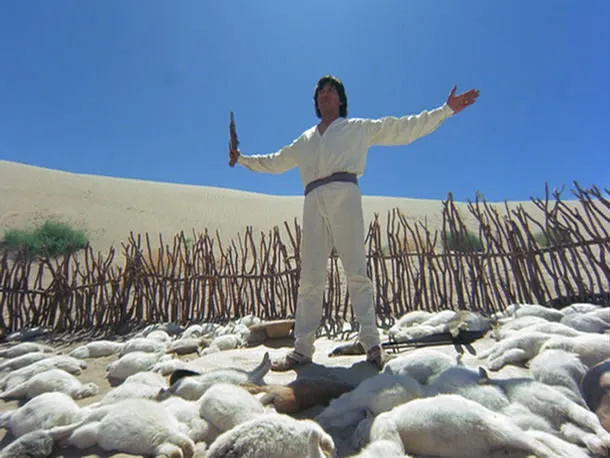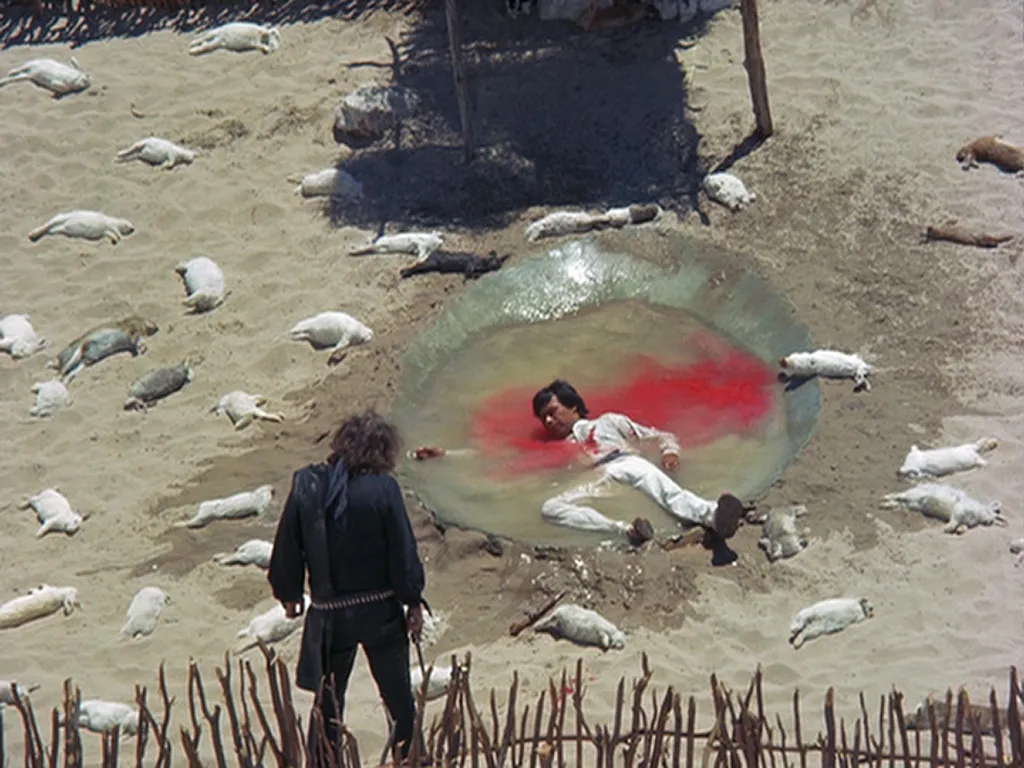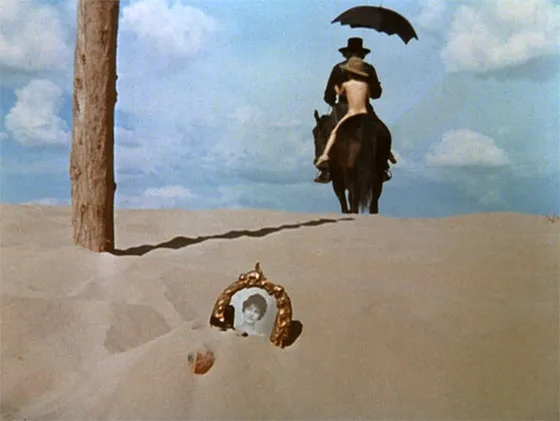El Topo
Dir — Alejandro JodorowskyThrough the sea of scorched sand, a black horse is carrying two riders, despite all the complaints the desert might have.
The scene might not feel absurd, conventional even—but then the man with tight fit all-black leather-wearing vest, black pants, black shirt, black hat, and a jaw-full of black beard might make it less certain. Even more so, when the second horse rider is a child—entirely naked, not a thread on his body. The man wields a pistol and roams around. The scene becomes absurd then.
Frames change. Scene changes. Dead bodies everywhere. And small ponds of blood. Not metaphorically, but literally. Yet when the story further its roots, sprouts new branches—confusion takes hold of me. The possibility of it being a metaphor, or not, holds equal grounds.
"Let's introduce ourselves through music,"—a clueless audience, me in this case, thought it to be metaphorical. Yet, it appeared to be not so, and then became so in a broader aspect.
Then I met two blocks. One carrying the other on their back. One of them has no hands. And the other has no legs. Each of them acts as the other one's hands and legs respectively. Together they are in unison, one merged individual. Yes, it was too, a metaphor and it surprised me. Later I found many such characters in Jodorowsky's other films. He loves to include bizarre, mutilated characters that compliment his very colorful and unthinkable way of surrealism.

source
And lo, being furious I forbid someone not to come closer. "Stay away, don't come. You're venomous to my pet bunnies." I say.
Yet they come.
And my pet bunnies die.
I'm buried. With my dead bunnies.
Instead of soil and dirt.
Alejandro Jodorowsky's El Topo (1970), is substantially oblivious. The entire film is filled with countless metaphors and their collective nature that creates a style of surrealism that isn't common and often very hard to decipher. Many critics tried to explain the metaphors in numerous ways, some claimed they don't have any meaning. Although Roger Ebert thought, those are not there mindlessly, rather only Jodorowsky knows the significance of them.
The film is rich in storywise allegories too. Symbols of Christian myths and their modern, artistic rendition can be seen here. We're in a world of sodom and gomorah, riding along with El Topo—the central character of the film (played by the director himself)—but is he the savior of the world? Or a force of destruction who'll force the world to bend before him?
El Topo's adventures, the dualism of his consciousness, the companions, the all-seeing eye of the god, the fat women, the morphed cavemen—everything wants to express some meaning, wants to metaphorize something. I won't hesitate to admit that most of them I couldn't fathom at all and they only fuelled my insecurities.

source
It should be pointed out that, El Topo is absolutely an important addition to the history of world cinema, even if not for its story, but surely for its visual mastery and cinematic language. It is considered as Acid western, a subgenre of the western genre that involves metaphors.
However, the form of the film might feel erratic to many. If one cannot agree to see El Topo through the eyes of its bewildered, moonstruck creator—the film might not touch them at all. The plain, yet somewhat arrogant statement Jodorowsky put forward might have some truth after all.
" If you are great, ‘El Topo’ is a great picture. If you are limited, ‘El Topo’ is limited. "
— Alejandro Jodorowsky
El Topo is not the only avant-garde film by this Chilean-french master filmmaker, and the metaphors he uses in his films demand much discussion in separate threads—granted most of them will be mere conjecture but it wouldn't hurt. I'll dare someday.
Trailer
Trailer

You can read more of my film and literature related articles on my hive blog page.




